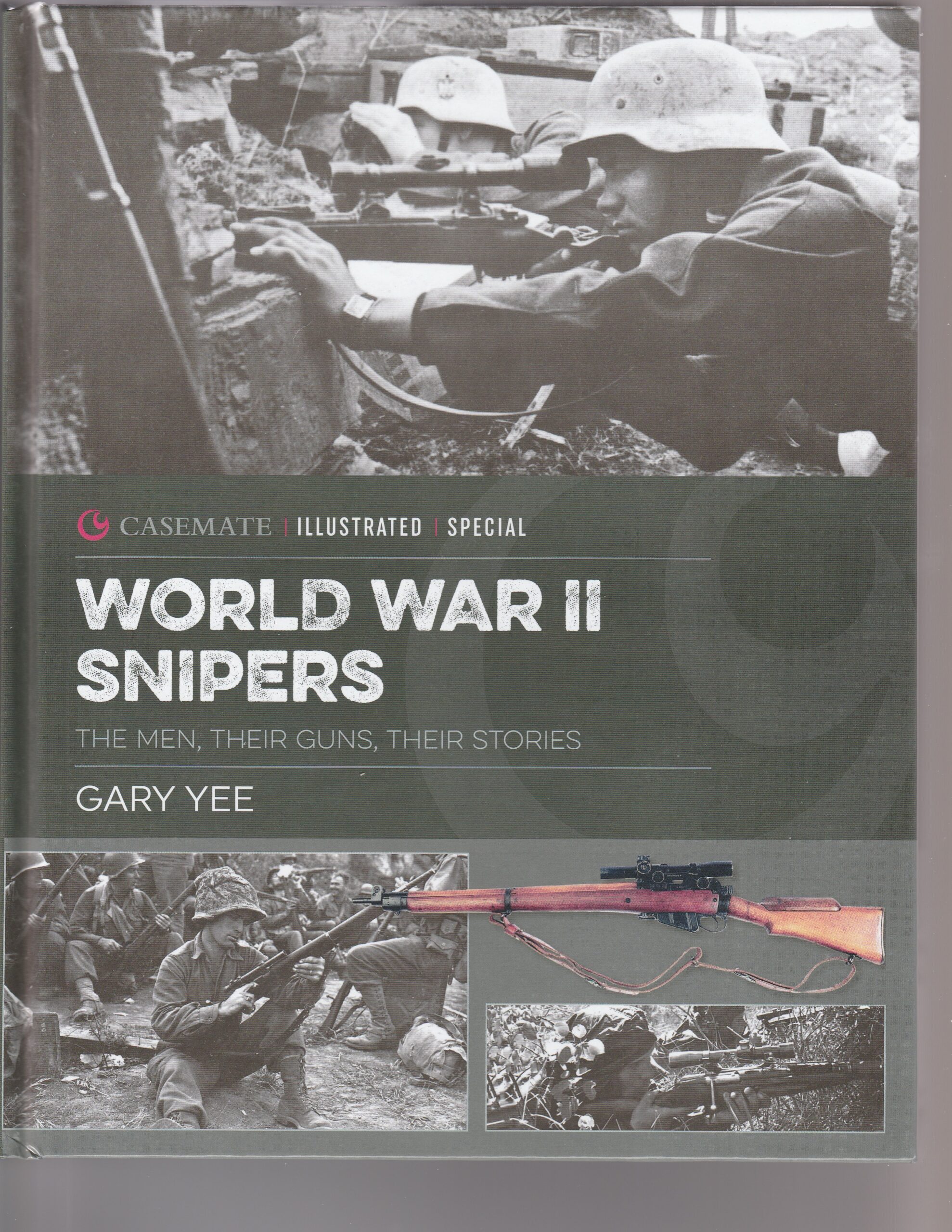
By Gary Yee
Available from:
Casemate Publishing
1950 Lawrence Road
Harristown, PA 19083
610-853-9131
$49.99 plus $6 shipping or $55.99 total
This 352-page book details all the guns and equipment used by all sides in WWII.
From the familiar M1903 Springfield sniper rifles to the infrared sighted German Vampir Stg44 they are all here along with all their scope sights and accessories. Rarities like the excellent Japanese Type 99 4-7 power variable scope are not left out. I have never seen such a comprehensive covering of all the sniper weapons and equipment used in WW2 before. This makes this book a must have read for collectors.
The experiences of both the snipers and the men under their fire is quite nicely covered enabling a much clearer and complete picture of the use and effectiveness of snipers. The psychological effect of on the enemy of being under sniper fire can be as devastating as the actual damage snipers do.
The training given by the different combatants is shown giving a much broader look at what it takes to make a successful sniper. Many of the most successful snipers were hunters and shooters before the war learning woodcraft, hunting, and concealment on their own. One German sniper, Bruno Stutkus, had done a thriving smuggling business as a boy growing up on the East Prussia and Lithuania border smuggling lighters, flints and other items in demand to Lithuania and returning to Germany with hams, sausage, etc. A lover of the outdoors, he quickly learned to spot the border guards despite their best attempts to camouflage themselves and managed to pass them unseen. All that came in very useful when he went to war for the Fatherland. The Germans always said that sniping is 90% camouflage and 10% firing.
As a sniper Sepp Allerberger epitomized the cool, calm, detachment required of a sniper when he spotted two Russians torture and execute two German POW’s. He calmly dispatched the Soviet war criminals without letting his emotions ruin his aim. He then quickly changed positions because normally you only fired one shot from a position in order to avoid detection.
While some countries went to great lengths to adequately train their snipers some American snipers were simply sent to the range to practice with their weapons. A look at all the countries’ training methods is the most enlightening part of this book giving a clear picture of the skills required and how best to obtain them.
This is not a dry technical history but a book that will keep the reader’s attention riveted as it has something for everyone interested in this subject.—Jim Dickson



